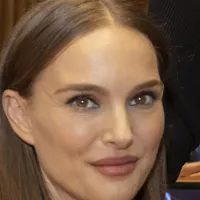Schizophrenia is a chronic mental disorder primarily characterized by hallucinations, delusions, disorganized thinking, and abnormal behavior or affect. Onset typically occurs in young adulthood, and symptoms persist long-term. Diagnosis relies on behavioral observation, psychiatric history, and corroborating reports, with diagnostic criteria requiring symptoms present for at least six months or one month. Co-occurring mental disorders, such as mood, anxiety, substance use disorders, and OCD, are common in individuals with schizophrenia.
1908: Term Schizophrenia Coined by Eugen Bleuler in 1908
In 1908, Eugen Bleuler renamed dementia praecox to schizophrenia, recognizing that the disorder was not a degenerative dementia.
1938: Use of Electroconvulsive therapy in 1938
By 1938, the use of electricity to induce seizures, known as electroconvulsive therapy (ECT), was in use to treat schizophrenia.
1964: Publication of "The Three Christs of Ypsilanti" in 1964
In 1964, a case study of three males diagnosed with schizophrenia who each had the delusional belief that they were Jesus Christ was published as "The Three Christs of Ypsilanti".
1980: DSM III published in 1980
In 1980 DSM III was published and showed a shift in focus from the clinically based biopsychosocial model to a reason-based medical model.
1989: Sluggish Schizophrenia Diagnosis Discredited in 1989
From the 1960s until 1989, the diagnosis of sluggish schizophrenia, used in the USSR and Eastern Bloc to confine political dissidents, was discredited.
2000: WHO Study on Schizophrenia Prevalence in 2000
In 2000, the World Health Organization (WHO) found that the percentage of people affected by schizophrenia and the number of new cases each year were roughly similar around the world.
2002: Estimated Annual Cost of Schizophrenia in the US in 2002
In 2002, the annual cost of schizophrenia in the United States was estimated at $62.7 billion, including both direct and non-healthcare costs.
2002: Name Change in Japan in 2002
In 2002, the term for schizophrenia in Japan was changed from seishin-bunretsu-byō (mind-split disease) to tōgō-shitchō-shō (integration–dysregulation syndrome) to reduce stigma.
2012: Name Change in South Korea in 2012
In 2012, a similar change to attunement disorder was made in South Korea.
2013: Exclusion of first-rank symptoms from DSM-5 criteria in 2013
In 2013 the first-rank symptoms were excluded from the DSM-5 criteria; while they may not be useful in diagnosing schizophrenia, they can assist in differential diagnosis.
2013: DSM-5 and ICD-11 Changes in 2013
In 2013, the DSM-5 no longer recognized subtypes of schizophrenia, such as paranoid, disorganized, catatonic, undifferentiated, and residual, as separate conditions and ICD-11 followed suit.
2013: DSM-5 Published in 2013
In 2013, the DSM-5 was published, which includes a Scale to Assess the Severity of Symptom Dimensions outlining eight dimensions of symptoms.
2013: Reduction in Negative Reporting in the UK since 2013
Since 2013, guidelines for reporting conditions and award campaigns in the UK have shown a reduction in negative reporting related to schizophrenia.
2015: Cochrane Review on Brain Stimulation Techniques in 2015
In 2015, a Cochrane review found unclear evidence of benefit from brain stimulation techniques to treat the positive symptoms of schizophrenia, in particular auditory verbal hallucinations (AVHs).
2015: Estimated Deaths Linked to Schizophrenia in 2015
In 2015, approximately 17,000 deaths were estimated to be linked to schizophrenia.
2015: Schizophrenia Deaths in 2015
In 2015, schizophrenia resulted in 17,000 deaths worldwide.
2016: Schizophrenia as a cause of disability in 2016
In 2016, schizophrenia was ranked as the 12th most disabling condition worldwide.
2016: Cost of Schizophrenia in the UK in 2016
In 2016, the cost of schizophrenia in the UK was put at £11.8 billion per year.
2017: Estimated New Cases of Schizophrenia in 2017
In 2017, it was estimated that there were 1.1 million new cases of schizophrenia.
2017: Global Burden of Disease Study: New Cases in 2017
In 2017, the Global Burden of Disease Study estimated 1.1 million new cases of schizophrenia.
2020: Effectiveness of Early Treatment
As of 2020, it remains unclear whether the benefits of early schizophrenia treatment persist after the treatment is terminated.
2020: Research on Biomarkers in Schizophrenia as of 2020
As of 2020, the study of potential biomarkers that would help in the diagnosis and treatment of schizophrenia is an active area of research. Possible biomarkers include markers of inflammation, neuroimaging, brain-derived neurotrophic factor (BDNF), and speech analysis.
2020: Cross-cultural study of BNSS in 2020
In 2020, a cross-cultural study found valid and reliable psychometric evidence for the Brief Negative Symptom Scale's (BNSS) five-domain structure cross-culturally.
2020: Release of "Three Christs" film in 2020
In 2020, a film with the title "Three Christs" was released, based on the 1964 case study.
2022: WHO Report: Global Schizophrenia Cases in 2022
In 2022, the World Health Organization (WHO) reported a total of 24 million cases of schizophrenia globally.
September 2024: Approval of xanomeline/trospium chloride (Cobenfy)
In September 2024, the fixed-dose combination medication xanomeline/trospium chloride (Cobenfy) was approved for medical use in the United States. It is the first cholinergic agonist approved by the US Food and Drug Administration (FDA) to treat schizophrenia.
Mentioned in this timeline
The United States of America is a federal republic located...
Japan is an East Asian island country situated in the...
Korea is a peninsular region in East Asia comprised of...

The World Health Organization WHO is a specialized agency of...
South Korea officially the Republic of Korea occupies the southern...

September is the ninth month of the year in the...
Trending

Keith Richards is a renowned English musician songwriter singer and record producer best known as a founding member guitarist and...

26 days ago SpaceX Launches Starlink 6-79 Mission from Cape Canaveral, Continuing Satellite Deployments

2 months ago Jillian Michaels Praises Charlie Kirk's Influence on Her Son, Citing Positive Impact.

27 days ago Goldie Hawn Celebrates Her 80th Birthday by Defying Ageing with Youthful Looks

2 months ago Natalie Portman: Ahsoka Season 2 Theory, Miss Dior Essence, AI Actress Controversy.
2 months ago Sleep Token Accused of IG Shutdown Over Tattoo Copyright: Artist Claims Label Involved
Popular

Candace Owens is an American conservative political commentator and author...

Ilhan Omar is an American politician currently serving as the...

XXXTentacion born Jahseh Dwayne Ricardo Onfroy was a controversial yet...

Tucker Carlson is an American conservative political commentator known for...

Charles James Charlie Kirk was a prominent American right-wing political...

Kashyap Pramod Patel is an American lawyer who became the...
